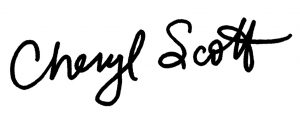Are you protecting your trademarks? Are you sure? You’ll notice that BPI doesn’t use registration marks (e.g., ™ and ®) anywhere but in advertisements and the occasional “advertorial” piece. Ever wonder why? According to the official stylebook of the American Chemical Society, which is the basis of our “house style,” they are entirely unnecessary. And editors everywhere dislike the impression they give as well.
On page 157 of the ACS stylebook, trademarks (“brand names”) are defined as adjectives that describe proprietary materials or products. Registration marks are “not necessary to ensure legal protection .” Many professionals in the public relations world are surprised to learn this when we share it with them. And it does sort of make you wonder what the point of those little marks is. Were they invented for use in advertising materials, where creativity and persuasion take priority over accuracy?
Perhaps a more relevant question for those of you seeking to communicate and inform readers about your work and your company’s offerings would be this: How do we protect our intellectual property (and that of others) in our articles and press releases? The keyword in ACS’s description above is adjective.
When your nose runs, do you grab a Kleenex? Nope. You grab a Kleenex tissue (or Puffs tissue, store-brand tissue, or whatever). Do office workers Xerox piles of paper to share copies with their colleagues? Nope. They make photocopies of them on a Xerox machine. Sadly, these are two trademarks that now rest on shaky ground thanks to their widespread use as a noun and a verb, respectively. And if you use your trademark as such, you’re jeopardizing its protection too — even with the registration marks in place. A trademark must be used as an adjective to modify a generic noun.
Capital letters do help. In English, they signify proper nouns. Extending that “propriety” into trademark usage, they signify the proprietary nature of a brand-name adjective. But you don’t need ALL CAPS to make your trademark special, just an initial capital letter will do (and don’t capitalize the noun it’s modifying). Acronyms represent a special case. SCUBA, for example, actually stands for “self-contained underwater breathing apparatus” — and it’s trademarked. A company may like the way BIG Service looks in ad materials, but that doesn’t mean editors are obliged to follow suit — unless it stands for “bioprocess intellectual guru,” I suppose. It’s Big service.
There are other aspects of trademark protection, but those are the two main criteria: Make it stand out (e.g., by capitalizing it as a name), and use it as an adjective. And you don’t have to take my word for it. In addition to the International Trademark Association (www.inta.org), here are a few resources I like to share with authors and PR representatives:
- http://itre.cis.upenn.edu/myl/languagelog/archives/000943.html
- https://pubs.acs.org/series/styleguide
- https://www.healthcarelawinsights.com/2013/05/branding-101-proper-use-of-a-trademark-its-all-in-the-grammar
There are many more sources. Luckily, helpful guidance from intellectual property lawyers and other experts is just a Google search away. But don’t “Google it .”

